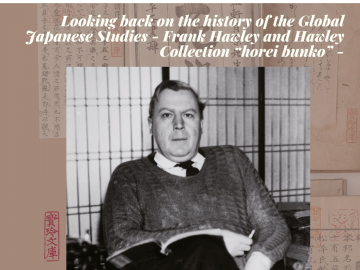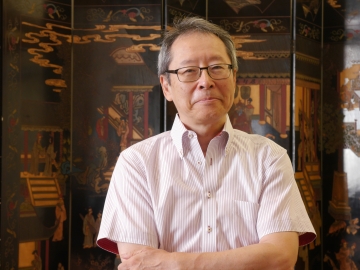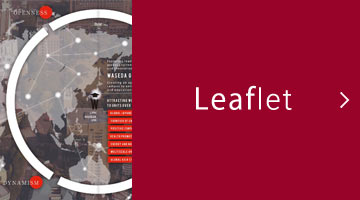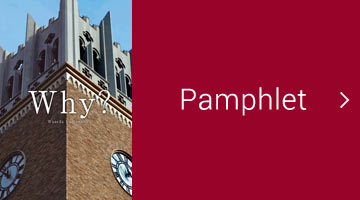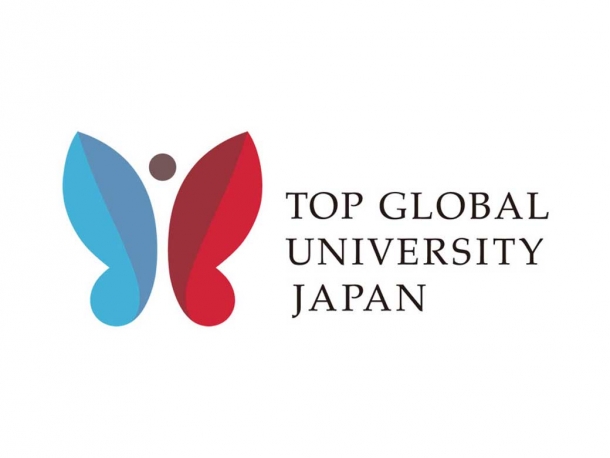* This event movie is now open to the public.
Please click here for the event movie.
On January 16 (Mon), 2023, in Conference Room 1, 3rd Floor, Building 33, Toyama Campus, Waseda University, a lecture meeting entitled “Looking Back on the History of Global Japanese Studies: On Frank Hawley and His ‘Horei Bunko’ Collection” was held, sponsored by Waseda University Research Institute for Letters, Arts and Sciences and the Ryusaku Tsunoda Center of Japanese Culture, and co-sponsored by Waseda University’s Global Japanese Studies Model Unit, Top Global University Project.
The lecture on the subject of this lecture, Frank Hawley and his “Horei Bunko” Collection, was held in January 2017 under the title of “Frank Hawley, A Study of His Character and Achievements: Re-illuminating Heritage Materials,” followed by a symposium in January 2019 entitled “Foundations and Prospects of Frank Hawley Studies: The Future of the Belongings Left by Frank Hawley.” This event was a direct continuation of these activities and represented a milestone in the six-year history of the project.
At this lecture, Manabu Yokoyama (Emeritus Professor at Notre Dame Seishin University and adjunct researcher at the Ryusaku Tsunoda Center of Japanese Culture), a leading expert on Hawley, and his research collaborator Hideyuki Fujiwara (Part-time lecturer at the Waseda University’s Faculty of Education and adjunct researcher at the Ryusaku Tsunoda Center of Japanese Culture) took the stage, and Haruo Shirane (Professor at Columbia University), currently on a visit to Japan, offered his comments. The speakers reported on the character of Hawley and his collection, and Shirane made important points about the history of Japanese studies in the modern era and Hawley’s role. After this lecture, there was time to exchange opinions with the participants, which proved to be a productive event. The following is a report on the content of this lecture.
At the beginning of this lecture, Professor Sungsi Lee (Faculty of Letters, Arts and Sciences, School of Humanities and Social Science) introduced the current status and future direction of Frank Hawley research, and explained that the lecture would be positioned as a summary of six years of activities. This was followed by presentations by two speakers.
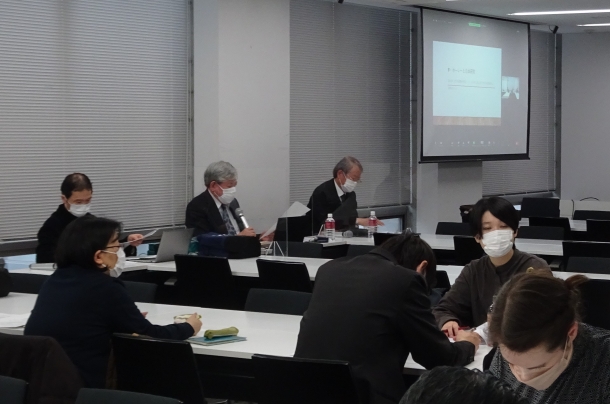
The first speaker, Manabu Yokoyama, gave a presentation titled “F. Hawley and Japanese Studies,” in which he suggested a reevaluation of Hawley as a “bibliographer,” although he was conventionally regarded as a “book collector,” “Japanese culture researcher,” and “Times correspondent.” In this presentation, Yokoyama noted following. The catalog of Hawley’s prewar collection shows that most of the books were so-called specialized books for research. Hawley collected “all the good ones, those in good condition, and even the alternative versions.” He collected not only originals, but also photographic editions of the books if needed. He would not begin his research unless he had everything he needed to his satisfaction.
This perfectionism worked against him: although he continued his research, he was unable to complete it. Yokoyama pointed out the problem: Hawley is renowned as a “rare book collector” because attention is paid only to the quality of his collection, but no attention is paid to the composition or the purpose of his collection. Yokoyama also introduced the “Back Ground Report 1947,” a report of exclusive interviews with important people, including exclusive interviews possible only after gaining MacArthur’s trust, and referred to the activities of correspondent Hawley. In the second half of the lecture, “Hawley’s Point of View,” Yokoyama approached Hawley’s character from two angles. The first was “Three Favorite Books,” a detailed description of three of Holley’s favorite books in Yokoyama’s collection. In the second point, “Attitude toward Translation,” Yokoyama introduced a newspaper article of the time reporting on the prewar dispute with Asataro Miyamori (an English literature scholar) and a detailed rebuttal to an anonymous criticism of Hawley’s translation of the “Great Japanese Dictionary for Foreigners” publication project (later cancelled), and also explained the specifics of two “MISCELLANEA JAPONIC” books among few books by Hawley. Yokoyama concluded his presentation with the following Hawley’s words: “I would like to write about Japanese bibliography in English in the future. What I would like to do is a support on Japanese studies by a combination work.”
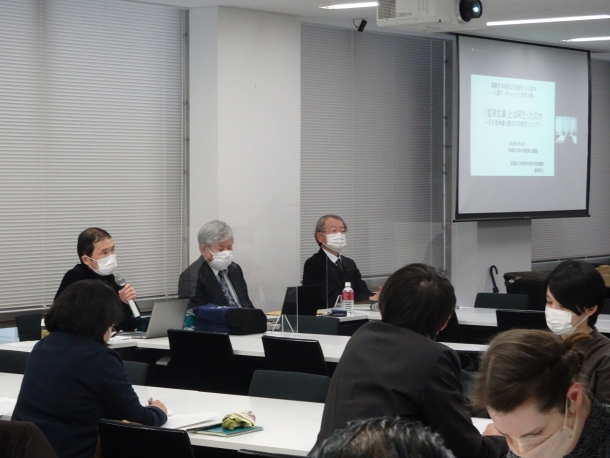
The second speaker, Hideyuki Fujiwara, gave a presentation titled “What was the ‘Horei bunko’: the whole picture and the possibility of its restoration,” pointing out that the so-called “Horei bunko” is widely known but its whole picture is not yet known in reality. Fujiwara then explained about the attempt to clarify the whereabouts of the materials included in the “Catalogue of Books” in Hawley’s estate and the “Catalogue of Sales” after his death, by comparing them with the searchable materials in the “Horei Bunko” in the catalogs of classic collection institutions (university libraries, archives, etc.) currently available to the public. That is an active use of the bibliographic information and digital archives available on the Internet, and clearly differentiates this research from the restorative studies of scattered materials conducted conventionally on paper media. At the beginning of the presentation, Fujiwara pointed out that the “Horei Bunko” is generally described in terms of “a collection of rare Japanese and Chinese books,” while the entire collection has not been grasped. Fujiwara then explained about the “Catalogue of Books” among the materials of Hawley’s estate, the “Horei Bunko” as an existing collection (Sakamaki and Horei Bunko in University of Hawaii, and Washi related documents in the Tenri Library collection), the posthumous auction catalog “A Bidding Catalogue of Books in the Collection of the Hawley Bunko,” especially the activities of Shigeo Sorimachi in collecting books in the catalog. Furthermore, a comparison of the “Catalogue of Books” and the “Catalogue of Sales” and the number of items in the “Catalogue of Sales” by category gave an overall picture of the “Horei Bunko.” In the latter half of the presentation, as part of the work to restore the scattered “Horei Bunko,” Fujiwara presented specific procedures for searching for “Horei Bunko” materials from materials scattered around the country, using the collection seal as a clue.
The process of the search for “Horei Bunko” materials held by Waseda University, Tenri University, the National Diet Library, CiNiiBooks (National Institute of Informatics), and other institutions listed in the Database of the General Catalogue of Classical Books (National Institute of Japanese Literature) and confirming the matches with the “Catalogue of Books” and “Catalogue of Sales” was a steady, but sure-fire, process of identifying existing “Horei Bunko” materials. Finally, as future developments, Fujiwara pointed out that it is important to promote the confirmation of “Horei Bunko” materials held by each institution and to collect “Horei Bunko” materials scattered around the world. He also pointed out the need for users of classical works to be aware of the “Horei Bunko” and to create a system for collecting and managing information related to the “Horei Bunko” and from there to continuously disseminate information on the restoration status of the “Horei Bunko.”

Following the two speakers, Haruo Shirane concluded the session with a presentation titled “Toward a Possible History of Global Japanese Studies,” in which he described the history of Japanese studies by overseas scholars since the Meiji era and the role of Hawley within that history. First, Shirane confirmed that prewar Japanese studies by Chamberlain, Aston, Waley, and others revolved around the United Kingdom, but after the war, they shifted to the United States. Regarding the introduction of Japanese culture overseas by Japanese scholars, he pointed out that the transmission of information from the perspective of religion, especially “Zen,” by D.T. Suzuki and Masaharu Anesaki, had a great impact. In this context, Shirane pointed out that Hawley conducted Japanese studies from the aspects of linguistics, bibliography, herbalism, and Ryukyu/Okinawa, and seemed to have had little interest in religion. Shirane also indicated that the influence of Hawley’s position as a journalist and his ability to disseminate information were significant, and research on Hawley is important for understanding the history of global Japanese studies and for considering future developments.
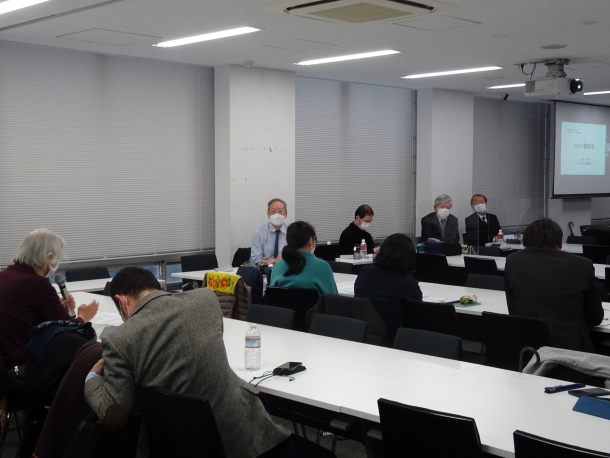
In the Q&A session, a question was raised about the presence of paintings in Hawley’s collection, to which an answer was given that no active collection activities regarding paintings had been confirmed. After the session, the speakers and the audience moved to a different venue for a discussion, where they exchanged opinions about their past activities and future developments.
Event Overview
- Date and time: January 16, 2023, 13:00-14:30 (JST)
- Lecturer: Manabu Yokoyama (Emeritus Professor, Notre Dame Seishin University), Hideyuki Fujiwara (Part-time Lecturer, Waseda University)
- Commentator: Haruo Shirane (Shincho Professor of Japanese Literature, Vice Chair of the Department of East Asian Languages and Cultures, Faculty Director of the Donald Keene Center)
- Language: Japanese
- Venue: Conference Room 1, 3rd Floor, Building 33, Toyama Campus, Waseda University, and online
- Participation is free
- Open to the public
- Sponsored by: Waseda University Research Institute for Letters, Arts and Sciences and the Ryusaku Tsunoda Center of Japanese Culture
Co-sponsored by: Waseda University’s Global Japanese Studies Model Unit, Top Global University Project
